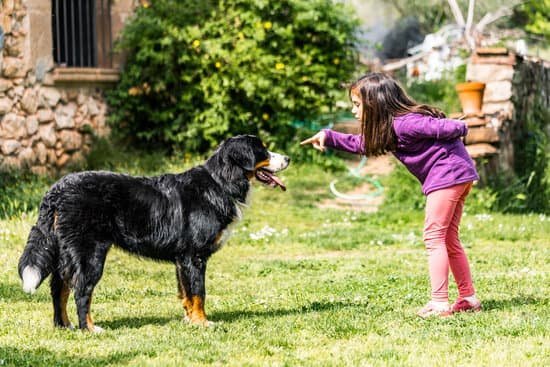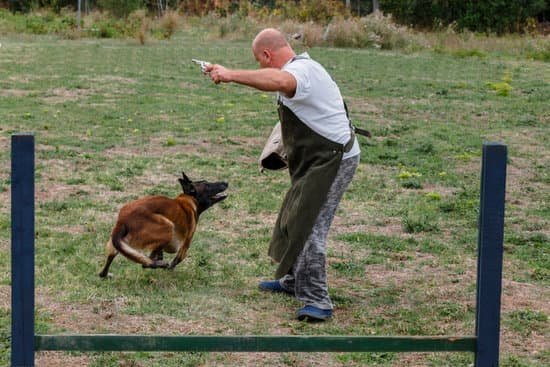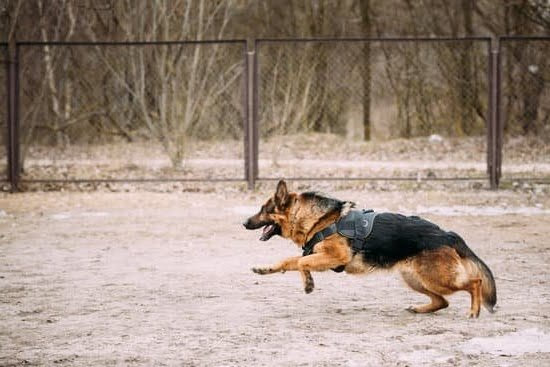Training your dog to run without a leash can be a liberating experience, allowing both you and your furry friend to enjoy the benefits of unrestricted exercise and freedom. Running off-leash provides dogs with the opportunity to explore their surroundings, engage in natural behaviors, and stay fit and healthy.
However, before diving into this exciting venture, it’s important to establish a strong foundation of obedience and ensure the safety of both you and your canine companion. This article will guide you through the process of training your dog to run without a leash, from assessing their fitness level to troubleshooting common challenges along the way.
One key reason to train your dog to run without a leash is the enhanced physical and mental well-being it fosters. When running off-leash, dogs have the freedom to move at their own pace, explore different terrains, and engage in natural behaviors such as sniffing or carrying out play bows.
This allows them to release extra energy while stimulating their senses and providing mental enrichment. Additionally, off-leash running promotes cardiovascular health and strengthens muscles in both dogs and humans alike.
Assessing your dog’s fitness level is an essential first step before embarking on off-leash running adventures. Just like humans, not all dogs are physically prepared for intense exercise right away.
By evaluating your dog’s current health status, age, breed characteristics, and any pre-existing medical conditions or injuries they may have sustained in the past, you can determine whether they are ready for off-leash running or if they require additional conditioning beforehand. Taking these precautions will help prevent injury or excessive strain on your furry friend’s body during runs.
In summary, training your dog to run without a leash opens up a world of opportunities for both physical activity and mental stimulation. It promotes your dog’s overall well-being while allowing them the freedom to explore their environment naturally.
However, ensuring that your dog is physically ready for off-leash running is crucial for their safety and health. By following the steps outlined in this article, you will be well on your way to enjoying the freedom and bonding experience that running with your dog off-leash can bring.
Assessing Your Dog’s Fitness Level
Before you start training your dog to run without a leash, it’s crucial to assess their fitness level to ensure they are ready for this activity. Running off-leash requires a certain level of physical fitness and stamina from your dog to keep up with you. In this section, we will discuss how to determine if your dog is ready for off-leash running and the steps you can take to help them get there.
Evaluating Physical Health
The first step in assessing your dog’s fitness level is evaluating their physical health. Take your dog to the veterinarian for a thorough health checkup before starting any rigorous exercise routine. The vet will examine your dog’s overall health, joints, heart, and lungs to make sure they are fit for running. It’s essential to rule out any underlying health issues that could be exacerbated by intense exercise.
Starting Slowly
Even if your dog is physically healthy, it’s important to start slowly and gradually increase the intensity of their exercise. Begin by taking short walks or jogs on a leash with your dog and observe their behavior and endurance.
Monitor how well they recover after each session and look for any signs of fatigue or discomfort. If they seem enthusiastic and energetic during these initial outings, it may be a good indication that they are ready for off-leash running.
Breed Considerations
It’s crucial to consider your dog’s breed when assessing their readiness for off-leash running. Certain breeds are more inclined towards high energy levels and have better endurance than others. Breeds such as Border Collies, Labrador Retrievers, Australian Shepherds, or Dalmatians tend to excel in activities like running due to their natural athleticism.
On the other hand, brachycephalic breeds like Bulldogs or Pugs may struggle with intense exercise due to their shorter snouts, which can make it harder for them to breathe efficiently. Understanding your dog’s breed characteristics will help you determine if they are physically capable of running without a leash.
By assessing your dog’s fitness level, evaluating their physical health, starting slowly, and considering their breed characteristics, you can determine if your dog is ready for off-leash running. Remember to seek guidance from a veterinarian or professional dog trainer if you have any concerns about your dog’s ability to handle this exercise.
Building a Strong Foundation
Building a strong foundation of basic obedience training is crucial when training your dog to run without a leash. This section will focus on the necessary steps to establish solid obedience skills that will lay the groundwork for successful off-leash running.
The first step in building a strong foundation is to ensure that your dog has mastered basic commands such as sit, stay, come, and heel. These commands are fundamental for off-leash running as they provide you with control and facilitate communication with your dog while they are running freely. Consistency is key during this stage of training – practice these commands in various environments and gradually increase the level of distractions to test your dog’s obedience.
Once your dog has a good understanding of these basic commands, it is important to work on their impulse control. Teaching your dog self-control can help prevent them from chasing after squirrels or other distractions while running off-leash. Use exercises such as “wait” or “leave it” to teach them to resist impulses and maintain focus on you.
Additionally, leash manners are crucial for a successful transition to off-leash running. Practice loose leash walking with your dog, rewarding them for walking next to you without pulling. This will translate into better behavior when they are off-leash, as they will understand the concept of staying by your side.
Overall, building a strong foundation of basic obedience training is essential before attempting off-leash running with your dog. Establishing solid obedience skills ensures that you have control over your dog’s actions and enhances safety during runs. With consistent practice and reinforcement, you and your well-trained pup will be ready to enjoy the freedom and bonding experience of running without a leash.
| Basic Obedience Training | Off-Leash Running Benefits |
|---|---|
| Mastering sit, stay, come, heel | Enhanced communication and control with your dog |
| Teaching impulse control | Preventing chasing after distractions while running |
| Leash manners and loose leash walking | Promoting staying by your side during off-leash runs |
Choosing the Right Gear
When it comes to running with your dog off-leash, choosing the right gear is essential for both your safety and your dog’s comfort. Below are some essential equipment options to consider when running with your dog without a leash:
Harness
A harness is recommended over a collar for running with your dog off-leash. It provides better control, reduces strain on the neck, and minimizes the risk of injury. Look for a well-fitted harness that allows for freedom of movement while still providing support.
Leash Belt
While you won’t be using the leash during off-leash runs, having a waist belt that can clip or hold the leash securely will come in handy during breaks or if you need to quickly restrain your dog in certain situations.
Retractable Leash
Although not necessary during off-leash runs, having a retractable leash can be useful for walks before or after your run, ensuring you have control over your dog when needed.
Reflective Gear
Running without a leash means being more visible to others, especially during early morning or evening runs. Consider investing in reflective gear such as vests or collars with LED lights to keep both you and your dog visible and safe.
Treat Pouch
Having treats readily accessible is essential for rewarding good behavior and reinforcing training commands during off-leash runs. Choose a treat pouch that is lightweight and easy to access so you can quickly reward your dog’s positive behavior.
Poop Bags
Responsible pet ownership includes cleaning up after your dog, even during off-leash runs. Carry poop bags with you at all times to maintain cleanliness and respect for the environment.
Remember that every dog is unique, so it’s important to choose gear that is suitable for your dog’s size, breed, and individual needs. It’s also recommended to consult with a professional trainer or veterinarian for further guidance on selecting the right gear for running with your dog off-leash.
Establishing Boundaries
When training your dog to run without a leash, it is crucial to establish boundaries and teach them to stay close and follow commands. This ensures the safety of both you and your dog, as well as allows for a more enjoyable running experience. Here are some techniques that can help you achieve this:
Start in Controlled Environments
Begin by practicing off-leash running in places where distractions are minimal, such as fenced-in areas or quiet parks. This reduces the chances of your dog getting overwhelmed or running off. As your dog becomes comfortable with staying close and following commands in these controlled environments, you can gradually progress to more challenging locations.
Use Positive Reinforcement
Reward-based training is highly effective when it comes to teaching dogs new behaviors. When your dog stays close or responds correctly to a command during an off-leash run, praise them enthusiastically and offer treats or their favorite toy as a reward. This positive reinforcement will reinforce their understanding of what is expected from them.
Practice Recall Exercises
Recall exercises are essential in teaching your dog to come back when called while running off-leash. Start by using a long leash during these exercises and slowly increase the distance between you and your dog over time. Use a consistent recall cue, such as “come” or “here,” and reward them generously when they respond correctly.
Incorporate Boundary Training
Teaching your dog boundaries is crucial for their safety during off-leash runs. Practice boundary training by setting up visual markers or using verbal cues to indicate where they should stay within proximity to you. Reward them for staying within these boundaries and gently redirect them if they start straying too far.
Remember that each dog is unique, and the time it takes for them to learn and understand boundaries may vary. Be patient, consistent, and always make training sessions positive and enjoyable for your dog. With time and practice, your dog will learn to stay close and follow commands while running off-leash, allowing you both to experience the freedom and joy of running together.
Practicing Recall
One of the most crucial aspects of training your dog to run without a leash is teaching them to come back to you when called. This skill, known as recall, is essential for their safety, as well as your peace of mind. Without reliable recall, allowing your dog to run off-leash can be risky and stressful.
To start training recall, choose a quiet and familiar area where there are minimal distractions. Begin by calling your dog’s name followed by a command such as “come” or “here.” Use an enthusiastic and encouraging tone of voice to make it enticing for your dog to come running back to you.
When they respond and start heading towards you, reward them with praise, treats, or a favorite toy. Reinforce this behavior consistently during each training session so that it becomes ingrained in their behavior. Gradually increase the distance between you and your dog when practicing recall to simulate real-life scenarios where they might be farther away from you.
It is important not to punish or scold your dog if they don’t respond immediately. Instead, stay patient and avoid potential negative associations with the recall command. If they do not come back right away, go back a step in the training process and practice in an even more controlled environment before progressing again.
It is worth noting that building a strong bond with your dog through positive reinforcement training can greatly improve their response rate during off-leash runs. By making sure each interaction is positive and rewarding for them, you are more likely to have success with recall training.
| Common Mistakes in Recall Training | Tips for Successful Recall Training |
|---|---|
| Calling the dog’s name too often without reinforcement | Use treats, toys, or praise to reward your dog when they come back to you |
| Not practicing recall in different environments and situations | Vary the training locations to ensure your dog learns to come back in different scenarios |
| Allowing your dog to become distracted during recall training | Minimize distractions during training sessions and gradually increase as their skills improve |
Gradual Progression
Gradual progression is key when training your dog to run without a leash. It’s important to start slow and gradually increase both the distance and duration of your off-leash runs. This approach allows your dog to build up their physical endurance and also helps reinforce obedience and recall commands.
Start with Short Distances
When beginning off-leash running with your dog, it’s crucial to start with short distances. This allows your dog to become familiar with the experience of running without a leash while staying in close proximity to you. Begin by choosing a safe, enclosed area such as a fenced-in yard or an empty field where you can practice without any potential dangers or distractions.
Encourage your dog to run alongside you using verbal cues or treats if necessary. Gradually increase the distance that you allow your dog to run away from you, ensuring they understand that they should keep an eye on your whereabouts. Remember, always maintain control of the situation and be ready to call them back if needed.
Extend Duration Gradually
In addition to increasing distance, it is important to gradually extend the duration of your off-leash runs over time. Start with short bursts of off-leash running and gradually increase the length of each session as your dog gets more comfortable and confident.
It’s essential not to push your dog too hard or too quickly during this process. Pay attention to their behavior and energy levels, making sure they are not showing signs of exhaustion or distress. During breaks, provide water for hydration and allow for sufficient rest periods before continuing.
Monitor Progress and Adjust Accordingly
As you progress in gradually increasing both distance and duration, make sure to monitor your dog’s progress closely. Each individual dog will respond differently, so it’s important to be flexible with adjustments based on their needs.
If you notice any signs of fatigue or reluctance from your dog during a run, it’s crucial to reduce the distance or duration for the next session. Listen to your dog and prioritize their safety and well-being above all else.
By following a gradual progression, you are allowing your dog to build their stamina and confidence gradually, leading to a successful transition into off-leash running. Always remember to stay patient, consistent, and positive throughout this process. With time and practice, both you and your dog will enjoy the freedom and exhilaration of running together without a leash.
Troubleshooting Common Challenges
Dealing with distractions, aggression, or fear while running without a leash can be challenging but with patience and consistent training, you can overcome these common challenges. Here are some tips to help troubleshoot and address these issues:
- Distractions: Dogs can easily get distracted while running off-leash, especially in new environments or around other animals. To mitigate distractions, start by practicing obedience commands in controlled environments such as a fenced-in yard or quiet park. Gradually increase the level of distractions as your dog becomes more comfortable and responsive. Use high-value treats or toys to redirect their attention when they become distracted and reinforce positive behavior.
- Aggression: If your dog shows signs of aggression towards people or other animals while running off-leash, it is important to address this behavior immediately. Consult with a professional dog trainer who specializes in aggression issues for guidance on how to manage and correct this behavior. In the meantime, keep your dog on a leash or use a long line during runs to ensure the safety of others.
- Fear: Some dogs may feel anxious or fearful when running without a leash, causing them to exhibit signs of nervousness such as cowering, shaking, or attempting to escape. It’s crucial to create a positive association with off-leash running by gradually introducing your dog to new environments and experiences at their own pace. Provide plenty of praise, treats, and encouragement throughout the training process to build their confidence and trust.
- Seek professional help: If you encounter persistent challenges with distractions, aggression, or fear while running without a leash, consider consulting a professional dog trainer for personalized advice and assistance. They can provide tailored strategies based on your specific situation and help you address any underlying behavioral issues that may be hindering your progress.
Remember that every dog is unique and may require different approaches when dealing with common challenges during off-leash running training. Be patient, consistent, and always prioritize the safety and well-being of both you and your dog. With time and dedication, you will be able to overcome these challenges and enjoy the freedom and bonding experience of running with your dog off-leash.
Safety First
Running with your dog off-leash can be a rewarding and exhilarating experience, but it’s important to prioritize safety to ensure the well-being of both you and your furry companion. Taking certain precautions can help mitigate potential risks and make your off-leash runs enjoyable and worry-free.
Identify Suitable Running Areas
Before letting your dog run off-leash, it’s crucial to identify safe running areas that are free from traffic, hazards, and potential dangers. Look for designated dog parks, open fields, or trails that allow off-leash running. Make sure the area is fenced or secure to prevent your dog from wandering off into unsafe territory.
Leash-Walk Warm-Up
Before transitioning to an off-leash run, start with a leash-walk warm-up to allow your dog to burn some initial energy and get into the right mindset. This not only helps prevent sudden bolts of energy but also gives you an opportunity to assess your dog’s behavior, responsiveness, and readiness for off-leash running.
Use a GPS or Tracking Device
Investing in a GPS or tracking device specifically designed for dogs can provide extra peace of mind when running off-leash. These devices attach to your dog’s collar or harness and enable you to monitor their location in real-time using smartphone apps or handheld receivers. In case your dog tends to wander away or gets lost during the run, these trackers can help locate them quickly.
Be Aware of Surroundings
While running with your dog off-leash, it’s essential to stay aware of your surroundings at all times. Keep an eye out for potential hazards such as wildlife, other dogs or humans who may pose a threat, or any changes in the environment that could affect both you and your dog’s safety.
Taking precautions like these helps minimize risks and ensure a positive off-leash running experience for you and your dog. Remember that safety should always be a top priority, so it’s crucial to tailor your off-leash running routine based on your dog’s abilities, limitations, and individual needs.
Practice Makes Perfect
Training a dog to run without a leash requires consistency and continued training for long-term success. Once your dog has mastered the basics of off-leash running, it is important to maintain and improve their skills through regular practice.
One way to ensure consistency is to establish a consistent routine for off-leash running. Set aside specific days and times for your runs and stick to that schedule as much as possible. Dogs thrive on routine, so having a predictable schedule will help them understand what is expected of them during off-leash runs.
During each training session, focus on reinforcing the commands and behaviors that you want your dog to exhibit while running without a leash. This could include commands such as “stay,” “heel,” or “come.” Use positive reinforcement techniques such as treats, praise, and play to reward your dog for following these commands correctly.
In addition to regular training sessions, it is important to provide mental and physical stimulation for your dog on a daily basis. Dogs are intelligent creatures who need both mental and physical exercise to stay happy and healthy. Incorporate activities such as puzzle toys, interactive games, and obedience training into your daily routine to keep your dog engaged and stimulated.
Continued training also involves regularly assessing your dog’s progress and addressing any challenges or setbacks that may arise. Keep track of how well your dog responds during off-leash runs and make adjustments as needed. If you notice any issues with distractions, aggression or fear, work on desensitizing your dog in those situations or seek professional help if necessary.
By consistently practicing and continuing the training process with your dog, you will increase their confidence in running off-leash while strengthening the bond between you two. Remember that every dog is different, so be patient, persistent, and adapt your approach based on their needs. With time, effort, and dedication, you can enjoy the freedom and bonding experience of running with your dog off-leash.
Conclusion
In conclusion, training your dog to run without a leash can provide both you and your furry companion with a sense of freedom and an enhanced bonding experience. By following the steps outlined in this guide, you can gradually build a strong foundation of obedience and trust that will allow your dog to safely enjoy off-leash runs.
Assessing your dog’s fitness level is crucial before embarking on off-leash running. It is important to ensure that your dog is physically capable of handling the increased freedom and exercise. Building a strong foundation of basic obedience training will also help establish boundaries and ensure that your dog follows commands while running off-leash.
Choosing the right gear, such as a reliable harness or collar, is essential for the safety and comfort of both you and your dog during off-leash runs. Additionally, teaching your dog to stay close and practicing recall exercises will help maintain control and prevent any potential dangers or distractions.
As you progress in your training journey, gradually increasing the distance and duration of off-leash runs will allow you to challenge both yourself and your dog while still prioritizing safety. Troubleshooting common challenges such as distractions, aggression, or fear may arise along the way, but with patience and consistency, these issues can be overcome.
Ultimately, safety should always be a priority when running with your dog off-leash. Taking precautions such as being aware of local laws regarding leash requirements, ensuring proper identification for your pet, carrying necessary supplies like water and first aid kits, and keeping an eye out for potential hazards will help ensure a positive experience for both you and your four-legged companion.
Remember that practice makes perfect – consistent training sessions and ongoing reinforcement of commands will lead to long-term success in enjoying off-leash running with your dog. With dedication, patience, and love for your pet, you can build a strong bond while embracing the freedom of exploring together in nature without the confines of a leash. So grab your running shoes, gear up, and get ready for an adventurous journey with your dog by your side.
Frequently Asked Questions
How do I train my dog to run off the leash?
Training a dog to run off the leash requires consistent training, patience, and positive reinforcement. Start by building a solid foundation of obedience commands like “sit,” “stay,” and “come.” Once your dog has mastered these commands on the leash, gradually introduce running off the leash in a controlled environment such as a fenced-in yard or an enclosed area. Begin with short distances and practice calling your dog back to you using the command “come.”
Reward your dog with praise, treats, or toys as they successfully return to you. Gradually increase the distance and duration of off-leash running sessions while maintaining control through verbal cues and rewards. It’s crucial to ensure that your dog is properly trained before allowing them to run off the leash in open areas.
Will my dog run away without a leash?
Whether or not a dog will run away without a leash largely depends on their individual temperament, training, and environment. Some dogs may have a strong prey drive or an instinctive desire to explore, which could lead them to wander off if not properly trained or supervised.
However, even well-trained dogs can get distracted or chase after something enticing if they are not adequately secured. It is essential to understand your dog’s behavior, train them consistently, and assess the surrounding environment before deciding whether it’s safe for your dog to be off-leash.
How do I stop my dog from pulling when I run?
Teaching a dog not to pull while running can be achieved through proper training techniques. One effective method involves using positive reinforcement when the dog exhibits preferred behavior while on the leash during runs. Start by using a well-fitted harness instead of relying solely on a collar and attach a bungee-style leash that offers some flexibility while reducing impact on both you and your dog’s bodies. Practice reinforcing loose-leash walking during regular walks first by rewarding your dog whenever they walk beside you without pulling.
Gradually transition this training technique into jogging or running sessions, rewarding your pup for maintaining a loose leash as you increase your pace. Consistency, patience, and rewarding desired behavior will help your dog learn to run without pulling on the leash. Additionally, incorporating regular obedience training and exercise in your dog’s routine can also contribute to better leash manners while running.

Welcome to the blog! I am a professional dog trainer and have been working with dogs for many years. In this blog, I will be discussing various topics related to dog training, including tips, tricks, and advice. I hope you find this information helpful and informative. Thanks for reading!





